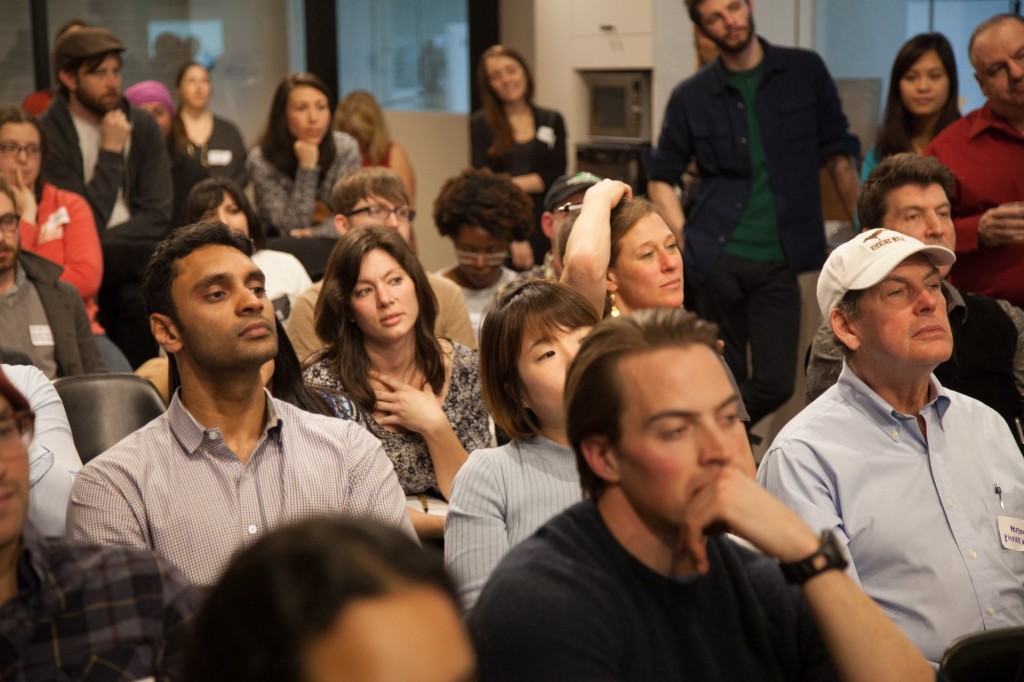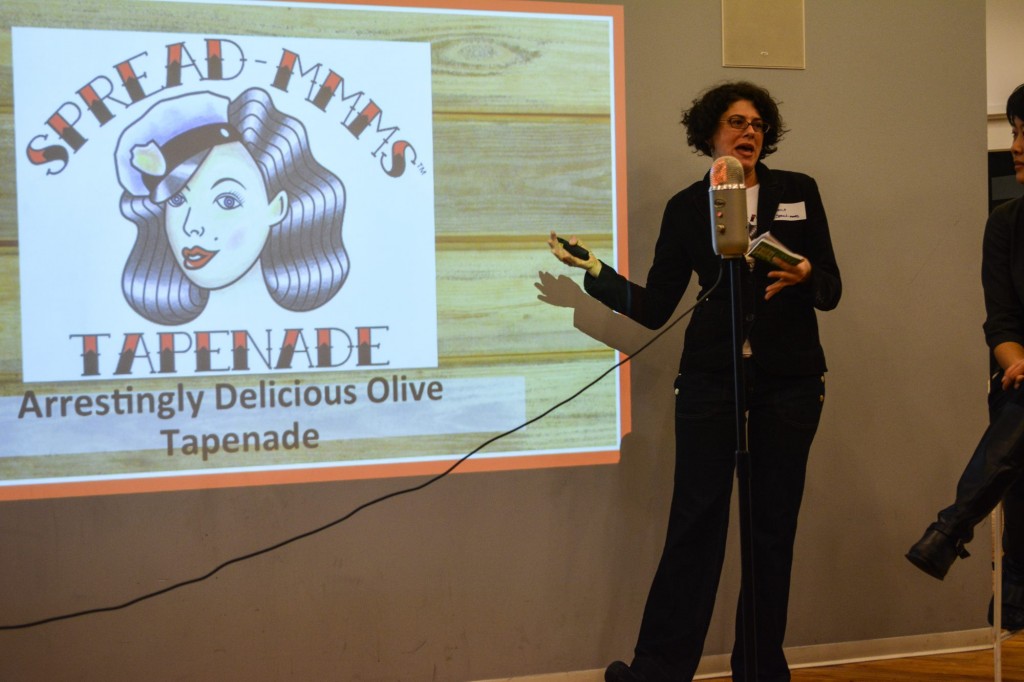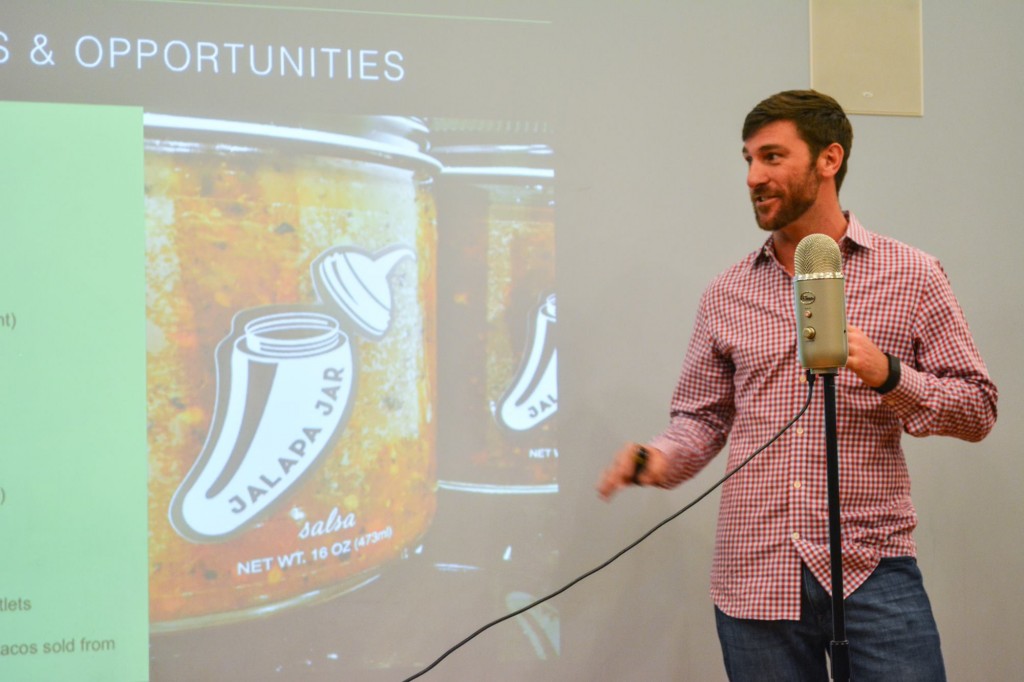There was still a little chill in the air the day Foodstand’s Summer Rayne Oakes (@sugardetoxme) sat down to interview Barry Benepe. They agreed to meet at the Union Square Greenmarket on a Wednesday—one of the busiest market days of the week (~300,000 walk throughs in a given day) —and spend a good forty minutes talking about how it all came to be. It is the Greenmarket.
Barry, who was an urban planner in the 70s, went on to spearhead urban revival throughout New York City by ushering in the creation of our city’s Greenmarkets as a way to connect urban dwellers to surrounding farms. So in a way, you can say that Barry is the Father of NYC’s farmers markets. That’s how Summer introduced him to those who stopped by Foodstand’s demo booth at the market when Barry paused to thank Summer for the interview. Rest assured—the people there were genuinely starstruck, particularly because the 50+ Greenmarkets and 15 Youthmarkets in the city have become a fixture for many-a-people’s daily or weekly shopping habits. Here’s how it all began:
Why did you go with “Greenmarket” vs. the more traditional “farmers market”?
We talked to the city law department and consumer affairs and we wanted to have them say the “farmers market”. To do it legally they had to be farmers selling farm produce. They wouldn’t do it until city council passed a law. So we couldn’t go farmers market and then had to explain what a Greenmarket was—from the farm to table. You are really dealing with farmers—buying from the farmers. It used to be the farmers that sold, and it wasn’t until recent years that they began hiring city people. Even now, the farmer has to be there a certain number of days in the year.
Who was initially buying [from the market]? Ordinary citizens? Chefs?
Everyday people. Not chefs. Danny Meyer from Union Square Cafe said he located here because the market is here. He is devoted to local produce. That was the beginning of chefs shopping here, and I believe they pay retail prices when they shop here. I think there are at least 70 chefs that shop here now, if not more.
How often do you cook for yourself at home?
All the time. I love cooking for myself. I’m totally inventive. I love food. I love leftovers especially! One thing I do: I never repeat a meal.
What were the problems that you were looking to solve when you came up with the idea for creating a farmers market in New York?
I was a planning consultant and I hired a man named Bob Lewis… I had developed a zoning map that was unique. Up until that point, zoning maps were flat. I had a sense of the larger picture of land and how it was used.
While Bob and I were working with our clients, we saw the lack of attention to farming. That led Bob and me to discuss how we could help farmers save farming. The other thing that was obvious to us was that the quality of food in our stores was terrible! In August when peaches are ripening in Long Island, they weren’t appearing in New York. They were hard and green and from California or somewhere else. There was no sense of food taste, smell or handling—everything was wrapped in shrink wrap. We didn’t have a sense of real food. We wanted to link the sense of a farm economy with a concept of nutrition and enjoyment of eating food.
Also, I grew up on a farm. My father bought the farm in 1938 when I was 10, and as I became a teenager, I worked on the farm. I helped harvest, package and deliver the food to market which was usually an auction block. Or canneries for tomatoes and freezing plants for food to be frozen. None of it was shipped fresh. Occasionally my brother would drive to the market in Baltimore or maybe in New York to sell wholesale by the basket, but generally none of our food wound up fresh on anyone’s table.
Was there anyone running something equivalent to a farmers market at the time—whether in the city or otherwise?
The city of Rochester was running a successful farmers market program run by the Chamber of Commerce. And they did it because they wanted to bring business downtown. Business was suffering and they thought a farmers market would do it, and they were correct.
The woman who was head there, Susan Snook, was very generous with information and helped us get started. Bob also read about Richard Po who was part of Williams Farmland Preservation. Richard Po gave us a cash contribution of $800 to go out and raise money. At that time I did a feasibility study for the city to do a farmers market. We went to a couple of foundations—the Kaplan family (part of Welch’s Grape Juice) made a donation, and America the Beautiful Fund to bring life to city spaces.
Any stories of farmers markets in the city before yours?
Well, when I was looking for farmers, I came upon a farmer by the name of John Monaghan who I was told used to farm in Queens. He was a man in his eighties—and don’t forget this was in 1976. And he told me that he remembered being a young man in his 20s and coming to sell at the foot of the Queensborough Bridge. I looked this up in the 1911 Bureau Farmers Report and there was a farmers market there that only allowed the farmers to sell as a retail market. He said when that market opened, he would come across on the ferry. And that he was the first farmer on the bridge ever. I had this confirmed in an article on the 100th Anniversary of the bridge in the New York Times. I thought it was an interesting story that we were coming back to that origin, to that place, where the first market opened.
WANT TO BE FEATURED ON BEHIND THE PLATE?
DOWNLOAD THE FOODSTAND APP!
Where did the farmers come from for the Greenmarket?
Bob went to the county agents and cooperative extension agents in NJ and NY because they already had a list of farmers with farm stands and pick-your-own and things like that. These were farmers who were used to retailing. But they were very suspicious about coming in. Ocean County, NJ is just across the harbor—not one farmer from Ocean County was interested in coming. One made the comment, “Yeah we’re going drive our trucks home with empty pockets.”
They thought that somehow the mafia would control things. And that was a real fear because the waterfront was controlled by the mafia and they controlled everyone with a truck. They held people up, and took money from them—New York was a crime city. That was mainly in the 40s and 50s, and we were far from that time, but there was still suspicion about New York.
So it took some heavy convincing. What did he ultimately do?
Bob spent time on the phone reaching out to them. So that summer, we opened three markets—59th Street first. We handled publicity and got responses from three major TV channels. They wanted to cover the market—it would appear at the end of the major news. The news was bad back in the 70s and this was the “good news” at the end of the show. People were calling City Hall asking where the farmers market was, but City Hall knew nothing about it! It took time to educate the city that we were working there.
How was the Union Square Farmers Market formed?
We were asked if we would come down to Union Square; they were trying to revive the area. They had prepared a plan for Union Square that showed a tennis court where the market is, and I said, “Change your plan; take the tennis court out and have a farmers market,” which they did. And they also took charge in getting the permits that we need.
What was the area like?
Oh, this was a BAD area, all the stores were closed, and they were trying to use us as a mechanism to turn the area around. And so when we started, it was a dismal area. And people didn’t want to shop there.
How many farmers were you able to convince to showcase at Union Square?
We had at least 12 farmers, and grew to 18. We had 9 on each side on 59th Street. It was Saturdays only to start and didn’t go to the end of the day, but we had around 2,000-foot traffic. The farmers did well.
Did you go back to your original farmers?
I think in general, the farmers from 59th Street did both locations. Some of them are still around and can probably tell you—S & SO Produce Farm. Not only the same farmers came down but when we broadened Union Square to additional days—we went from Saturday to Wednesday and then we later added a Friday and a Monday—the same farmers kept on coming in and no other farm could gain access to the Monday markets. So we said Monday is only for new farmers. We had a lot of organic growers who couldn’t get into the other markets or didn’t know about them.
What were the rules of the farmers market—if you had any to start?
We were in the process of developing rules. The first day we opened at 59th Street, one farmer came in with toys, and another came in with bananas. I asked the guy, “What’s up with the toys?” He said, “Well, they were up in the attic, so I thought I’d bring them down.” So we nixed things outside of produce to start. Then the other rule became: you had to grow your own, but could buy 25% locally. That rule I think still holds. We started with fruits and vegetables, and then we started to move into dairy products, eggs, butter, and meat.
How were you advertising in the city?
My children worked with me in the Greenmarket and we made t-shirts in the first year. Signage was important. We tried a banner across 2nd Avenue where 59th Street location was, and we had it very high, but a big boom truck ripped it down, so we gave up on that. We got permission to put up signs on the poles.
What food issue do you want to see put back on the political agenda?
I would like to see all the stores sell food directly from the farmers.
So all local all the time?
I want to see the Greenmarket go out of business because all the stores go local.
What’s a good day at the farmers market?
Here [in Union Square] $3,000 or more. People who shop in the market often don’t shop for price (even though we might be cheaper). First of all, people shop from their favorite farmers. Also, they like the choices. We have 50 varieties of lettuce! You can’t find that in the supermarket.
What’s your local farmers market?
Abingdon Square Farmers Market. Usually on Saturday we go there first and get some of the heavy stuff, and then come here to Union Square. I need to get the dairy products here, the milk and things. Flatbreads we can get here.
What is your biggest #foodfail?
That’s funny. The one that failed also succeeded. Chocolate soufflé. The first one I made was perfect. The second one I made collapsed. I don’t know what I did wrong, but still ate it. The other thing I failed at was cooking roast beef for Colette Rossant, an acclaimed food writer and critic. And it failed when she came—I didn’t realize I put in a frozen piece of meat. So after two hours, when it was supposed to be done, it was still hard! I forgot to thaw it out the day before.
Any great restaurants you particularly like in the city?
One restaurant just opened a block from my house called Bespoke Kitchen. Judith, my wife, introduced me as the founder of the Greenmarket and the chef and team were so excited to talk about food. When the bill came out it said, $0.00, and the food was just magnificent. We have gone back, and they came with a huge amount of food. I took enough food home for five more meals. Another restaurant we love to go to is the restaurant in the Jane Hotel—Cafe Gitane. Seeing the sunset come through the windows over the Hudson… very beautiful. And they are very nice people. They do Moroccan cuisine there which is really good.
What are some good food tips?
One little thing I’ll do is use beet juice to cook carrots because it deepens the orange of the carrots. It’s fun. With greens, I use apples, raisins and nuts sometimes. One thing I particularly love to do are omelets. I beat the whites up separately and then add the yolk to it. I like to use a lot of ingredients.
How are you involved with the Greenmarket today?
As a customer!




